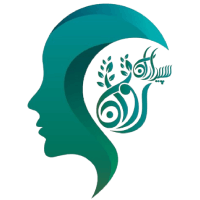
Blog
The difference between autism and dyspraxia

Neurodevelopmental disorders such as autism and dyspraxia (developmental coordination disorder) are sometimes confused due to overlapping symptoms or similar impacts on daily functioning. However, they are fundamentally distinct in nature, causes, and management approaches. Understanding these differences is essential not only for mental health professionals but also for families, educators, and society to provide targeted and effective support. This article scientifically examines various aspects of these two disorders.
فهرست عناوین
ToggleDefinition and Prevalence of Autism and Dyspraxia
Autism and dyspraxia differ in definition, prevalence, gender distribution, and diagnostic methods, which are explained below:
Autism Spectrum Disorder (ASD)
Autism is a neurodevelopmental disorder with genetic and environmental foundations that affect brain development from the earliest years of life. It is characterized by persistent challenges in understanding and managing social interactions, deficits in verbal and nonverbal communication, and a tendency toward repetitive behavioral patterns or restricted cognitive interests. The term “spectrum” refers to the wide variation in symptom severity—from nonverbal individuals with high support needs to high-functioning individuals who may face challenges only in specific social situations. Research indicates autism is associated with structural differences in brain regions related to social processing and cognitive flexibility.
- Prevalence: According to the latest 2023 report from the Centers for Disease Control and Prevention (CDC), 1 in every 36 children in the United States is diagnosed with this disorder.
- Gender: Autism occurs about 4 times more frequently in boys than girls, although some theories suggest this gap may be due to later diagnosis in girls who better mask their symptoms.
- Diagnosis: Symptoms are usually identifiable between 18 months and 3 years of age, but milder cases (such as Asperger syndrome) are often not diagnosed until school age or even adulthood. Early diagnosis and behavioral interventions (such as ABA therapy) play a key role in improving adaptive skills.
Developmental Coordination Disorder (DCD) or Dyspraxia
Dyspraxia, classified as Developmental Coordination Disorder (DCD) in the DSM-5, is a neurodevelopmental disorder characterized by difficulties in motor coordination and challenges in planning and executing purposeful activities. This disorder stems from structural and functional differences in the brain and affects an individual’s ability to perform coordinated and automatic movements. Children with dyspraxia may struggle with simple tasks such as riding a bicycle, buttoning clothes, using scissors, or writing legibly. These challenges often lead to early fatigue, avoidance of physical activities, and even reduced self-confidence.
- Prevalence: Studies show that about 5-6% of children worldwide live with this disorder.
- Gender: Dyspraxia is more common in boys, but its ratio is lower compared to autism (approximately 2 boys for every 1 girl). Some research suggests that girls may mask symptoms by using compensatory strategies.
- Diagnosis: Diagnosis typically occurs during school age (5-7 years old) after persistent motor delays are observed, as the demand for motor coordination (such as writing or sports) increases at this stage.

Clinical Differences Between Autism and Dyspraxia
Although both autism and dyspraxia fall under neurodevelopmental disorders, their clinical presentations are distinctly different. Autism’s core symptoms revolve around challenges in social communication and restricted, repetitive behaviors. Individuals with autism often have difficulty making eye contact, initiating or maintaining conversations, and sharing interests (joint attention deficits). Some use language in unusual ways, such as repeating others’ sentences without understanding the meaning (echolalia), or insist that conversations only focus on specific topics like numbers or trains. Repetitive behaviors are hallmark features of autism, including insistence on fixed routines (e.g., taking the same route every day), stereotyped movements like hand-flapping, or intense reactions to minor environmental changes. Additionally, many individuals show atypical sensory sensitivities, such as aversion to specific sounds or sensory-seeking behaviors like spinning objects in front of their eyes.
In contrast, dyspraxia is primarily defined by motor impairments. Children with dyspraxia show clear difficulties in gross motor coordination (such as running, jumping, or maintaining balance) and fine motor skills (such as using scissors, buttoning clothes, or writing). This disorder is often accompanied by delays in early developmental milestones (e.g., late walking or difficulty learning to ride a bike). A key sign is difficulty with motor planning; for example, an individual may struggle to organize the steps to prepare a simple sandwich or have trouble controlling pencil pressure (resulting in handwriting that is either too light or too heavy). Although some children with autism also experience motor difficulties, in dyspraxia these challenges occur without the social symptoms associated with autism (such as avoiding eye contact or difficulty interpreting nonverbal cues).
The differential diagnosis of these two disorders is based on the presence or absence of social symptoms. Autism is identified by a combination of communication deficits and repetitive behaviors, whereas dyspraxia is diagnosed solely based on persistent motor impairments that are disproportionate to the child’s chronological age or intellectual ability. This distinction is crucial in designing effective therapeutic interventions.
Underlying Causes and Neural Mechanisms
Autism is recognized as a multifactorial disorder involving complex interactions between genetic, environmental, and neurological factors. Genetically, studies have identified over 100 genes (such as SHANK3, NLGN4, and MECP2) that play roles in synapse development, neural signal transmission, and brain chemical balance. Mutations in these genes can lead to disrupted neuronal connectivity and impaired processing of social information. On the other hand, environmental factors such as prenatal infections (e.g., rubella), use of specific medications (valproic acid), or exposure to pollutants are also considered risk factors. At the brain structure level, abnormalities are observed in key regions such as the amygdala (responsible for processing emotions) and the prefrontal cortex (involved in social decision-making). Additionally, abnormal brain volume enlargement during early childhood or inefficient neural connections are common features seen in neuroimaging of affected individuals.
Dyspraxia also originates from developmental disorders of the central nervous system. One primary mechanism is delayed maturation of neural pathways related to motor coordination. For example, insufficient development of motor areas such as the cerebellum (which regulates movements) and the parietal cortex (involved in motor planning) can result in difficulties executing purposeful activities. Prenatal factors such as premature birth, low birth weight, or oxygen deprivation during fetal development are associated with an increased risk of this disorder. Moreover, inefficient sensory processing, including difficulties in integrating sensory information (such as judging object distances or regulating pencil grip pressure), exacerbates motor challenges.

Key Differences in Causes of the Two Disorders
While autism primarily involves complex genetics and dysfunction in brain regions related to social interactions, dyspraxia is more closely linked to motor developmental deficits and environmental factors related to the prenatal or perinatal period. In other words, although both disorders have roots in the nervous system, the underlying mechanisms and involved brain areas differ.
Similarities and Differences in Diagnosis and Treatment
The diagnostic and therapeutic processes for autism and dyspraxia, despite fundamental differences, share some overlapping approaches. In autism diagnosis, the main focus is on evaluating communication skills and social interactions. Professionals use tools such as the ADOS-2, where a child’s behavior is observed and analyzed in structured situations (e.g., joint play or response to emotional stimuli). Parent questionnaires like the ADI-R also play a key role in recording developmental history and atypical behavioral patterns. In contrast, dyspraxia diagnosis primarily focuses on assessing motor abilities. Standardized tests such as the MABC-2 measure gross motor skills (like running or throwing a ball) and fine motor skills (like writing or tying shoelaces). Before confirming the diagnosis, other similar disorders (such as cerebral palsy or visual impairments) must be ruled out.
In the treatment domain, both disorders require early and specialized interventions but have different therapeutic goals. For autism, treatment programs such as Applied Behavior Analysis (ABA), which reinforce positive behaviors and teach social skills step-by-step, help improve interactions. Speech therapy is also used to develop expressive language and understand nonverbal cues (such as tone of voice or facial expressions). Additionally, managing sensory sensitivities (e.g., tolerating loud noises or specific textures) through sensory integration therapy is a key component of treatment. For dyspraxia, occupational therapy is the main intervention, focusing on targeted exercises to strengthen motor coordination, balance, and motor planning. To reduce the strain caused by challenging activities (such as writing), the use of assistive tools like keyboards or voice recognition software is recommended.
Key Point in Similarities
Both disorders require a multidisciplinary approach (a combination of psychology, occupational therapy, and education), and treatment success depends on the collaboration of family, school, and therapists. Additionally, in both cases, early diagnosis has a significant impact on the effectiveness of interventions.
Fundamental Difference in Treatment Goals
In autism, treatment focuses on improving social interactions and reducing repetitive behaviors, whereas in dyspraxia, the primary goal is to enhance independence in daily motor functions (such as dressing or using educational tools). In other words, autism is recognized as a social-communication disorder, while dyspraxia is classified as a neuro-motor disorder.
برای مشاوره رایگان و رزرو وقت (یا اگر تماس گرفتید و قادر به پاسخگویی نبودیم) شماره تماس خود را وارد کنید. ما به زودی با شما تماس می گیریم!



